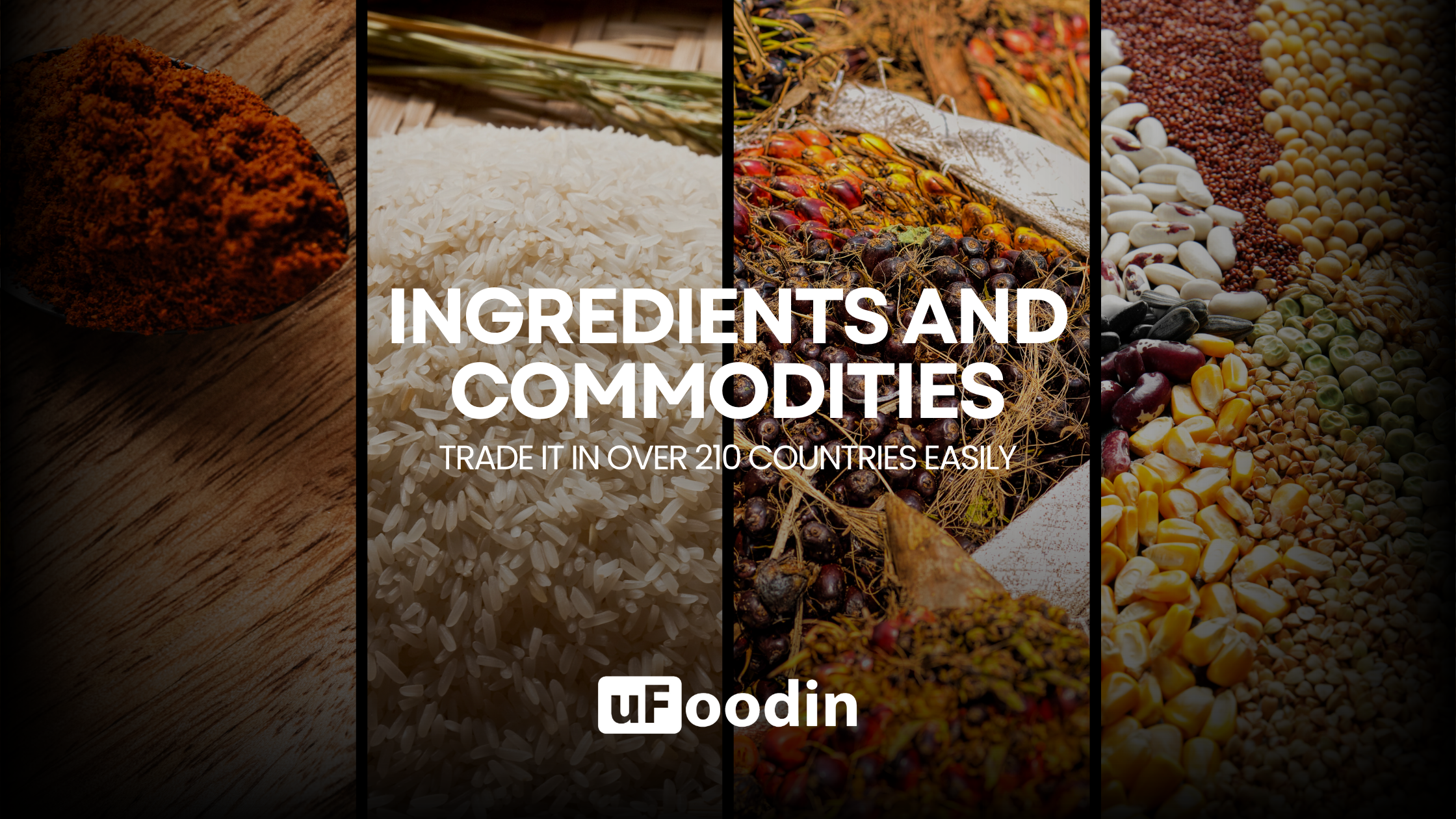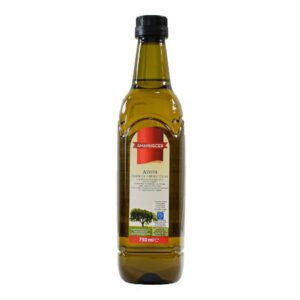
Food Ingredients and Commodities: Trade it in over 210 countries easily

The ingredients and commodities sector is a fundamental pillar of the global economy and the food supply chain. This sector includes a wide variety of products such as grains, oils, spices, additives, preservatives, powders… which are essential for the production of both processed and fresh foods. The demand for high-quality ingredients has significantly increased in recent years due to factors such as population growth, urbanization, and the preference for processed and convenient foods.
According to a report by Grand View Research, the global food ingredients market is expected to reach $478 billion by 2030, with a compound annual growth rate (CAGR) of 5.9% during the forecast period. This growth reflects the importance of ingredients and commodities in the global food economy.
| Growth Drivers
Today’s consumers are more informed and aware of the importance of nutrition and food quality. This growing awareness has led to increased demand for natural and organic ingredients.
According to a report by Grand View Research, the global organic food market is expected to reach $272.18 billion by 2027, growing at a CAGR of 16.4% from 2020 to 2027.
Innovation in agricultural technology has enabled more efficient and sustainable production of key ingredients.
The adoption of advanced techniques, such as precision agriculture and the use of biotechnology, has increased crop yields and improved the quality of agricultural products. According to the Food and Agriculture Organization (FAO), global cereal production reached a record 2,821 million tonnes in 2023, reflecting continued improvement in agricultural practices.

| Commodities in Food: A Fundamental Pillar
Before we explore the products that have experienced significant growth in recent years, let’s first list all the items in this category: wheat, rice, corn, oats, barley, rye, flaxseed, grain sorghums, mill feeds, butter, eggs, potatoes, wool, wool tops, fats and oils (including lard, tallow, peanut oil, soybean oil, and all other fats and oils), peanuts, soybeans, soybean meal, livestock, livestock products, and frozen products etc.
Cereals and Grains: Cereals and grains are fundamental in the global diet. The cereal and grain market remains one of the largest and growing segments. According to a report by ResearchAndMarkets, the global cereals market is expected to grow at a CAGR of 4.1% between 2024 and 2030.
Oils and Fats: The oils and fats market has also seen considerable growth, driven by demand for healthy oils such as olive oil and avocado oil.
The global oils and fats market is projected to reach $274.96 billion by 2025, according to Grand View Research.
Sugar and Sweeteners: Despite growing concerns about sugar consumption, demand for sweeteners remains high. The global market for sweeteners, including natural alternatives such as stevia, is expected to grow significantly.
A report from Allied Market Research projects that the global natural sweeteners market will reach $11.4 billion by 2026, growing at a CAGR of 8.4% from 2019.

| Who Needs to Buy or Sell Commodities and Ingredients?
In the dynamic world of trading ingredients and commodities, there are two main groups of actors that actively participate in this exchange:
Buyers:
- Factories: Food factories need a constant supply of raw materials for the production of processed foods. From canned and frozen goods to baked products and beverages, these manufacturers rely on high-quality and consistent ingredients to maintain production and meet market demand.
- Traders: Traders act as intermediaries, acquiring products in bulk to distribute to factories, retailers, supermarkets, and other end customers. Their role is crucial in connecting producers with other Companies and end consumers, ensuring that products reach the right markets.
Sellers:
- Farmers: Farmers are the primary suppliers of fresh and natural ingredients. Their production ranges from grains and vegetables to fruits and spices, all essential to the food supply chain.
- Cooperatives: Agricultural cooperatives group the production of several farmers to offer larger volumes of products and better sales conditions. This allows them to compete in larger and more diversified markets.
- Factories: In addition to being buyers, some factories also sell semi-processed products or specialized ingredients to other companies that use them as raw materials.
- Traders: Traders buy products from farmers and cooperatives and sell them in national and international markets. Their market knowledge and ability to handle large volumes make them vital to the trade of ingredients.
Statistics underscore the magnitude of this market. According to the Food and Agriculture Organization (FAO), global trade in food and agricultural products reached $1.5 trillion in 2023, highlighting the importance of ingredients and commodities in the global economy.

| How to Develop Sales Worldwide with Ease?
Developing international sales of ingredients and commodities can be challenging due to logistical, linguistic, and cultural barriers.
However, uFoodin simplifies this process by creating a dedicated B2B marketplace that brings together all food industry professionals looking to buy or sell raw materials.
uFoodin offers a comprehensive solution for companies of all sizes to expand their global reach with ease. Here are some ways uFoodin makes this possible:
E-Store: uFoodin provides companies with their own online store within the platform, allowing them to showcase their products to a global audience 24/7. This dedicated space enhances product visibility and makes it easier for buyers to discover and purchase products.
Email Campaigns: Targeted email marketing campaigns enable companies to reach potential buyers directly with information about new products, special offers, and important updates. This keeps companies in the minds of buyers and fosters ongoing business relationships.
SEO Improvement: Improving search engine optimization (SEO) ensures that companies appear at the top of search results, increasing visibility and attracting more organic traffic to their online stores.
Social Media Campaigns: Leveraging uFoodin’s social media channels allows companies to engage with a broader and more targeted audience in the food industry. Social media campaigns can generate interest and increase brand recognition, driving traffic to the online store.
uFoodin platform enables food industry professionals to develop their global sales effortlessly by offering a digital marketplace that facilitates the exchange of ingredients and commodities in over 210 countries. With its digital marketing tools and focus on global visibility, uFoodin is a crucial ally for any company seeking to expand its international market presence and increase sales.
uFoodin Editorial Team
LAST ARTICLES

Top 10 Rice Importing Countries
Rice, a staple food for more than half of the global population, is a critical component of international trade. In 2023, the global rice import

Top 10 Cheese Importing Countries
Cheese has become a universal staple, loved and consumed globally for its versatility and wide-ranging flavors. In 2023, the global cheese market was valued at
FEATURED OFFERS
Related Posts

Top 10 Rice Importing Countries
Rice, a staple food for more than half of the global population, is a critical component of international trade. In 2023, the global rice import

Top 10 Cheese Importing Countries
Cheese has become a universal staple, loved and consumed globally for its versatility and wide-ranging flavors. In 2023, the global cheese market was valued at

Top 10 Beer Importing Countries
Beer, one of humanity’s oldest beverages, remains a cornerstone of social culture and global trade. In 2023, the global beer import market exceeded $40 billion,

Top 10 Sugar Importing Countries
Sugar remains one of the most widely traded commodities globally, fueling industries from confectionery to beverages and processed foods. The global sugar import market was

Top 10 Wine Importing Countries
Wine imports are a key indicator of the evolving global demand for this centuries-old beverage. In 2023, global wine imports reached an estimated value of

Top 10 Tea Brands
Tea is one of the most widely consumed beverages globally, cherished for its diverse flavors, cultural significance, and health benefits. The global tea market has

Functional Always active
Preferences
Statistics
Marketing

Functional Always active
Preferences
Statistics
Marketing
Report
There was a problem reporting this post.
Block Member?
Please confirm you want to block this member.
You will no longer be able to:
- See blocked member's posts
- Mention this member in posts
- Invite this member to groups
- Message this member
- Add this member as a connection
Please note: This action will also remove this member from your connections and send a report to the site admin. Please allow a few minutes for this process to complete.

















Responses